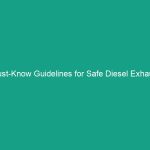Introduction
The oilfield industry is one of the most demanding and hazardous environments in the world. Workers face various risks, including exposure to toxic substances, extreme weather conditions, and heavy machinery. Therefore, the implementation of proper health, safety, and Environment (HSE) practices is crucial. One of the most effective ways to safeguard workers is through the use of Personal Protective Equipment for Oilfield Workers. This article delves into the essentials of protective gear, the regulatory frameworks surrounding it, best practices for usage, challenges faced in compliance, and the future of Safety in the oilfield sector.
Understanding Personal Protective Equipment (PPE)
Personal Protective Equipment (PPE) encompasses a variety of gear designed to protect workers from injuries and illnesses resulting from workplace Hazards. In the oilfield, this equipment is not just recommended; it is necessary for survival. Workers must understand the Types of PPE available and how to use them effectively.
Types of Personal Protective Equipment for Oilfield Workers
- Head Protection: Hard hats are essential for protecting against falling objects and head injuries.
- Eye and Face Protection: Safety Goggles and face shields protect against chemical splashes and flying debris.
- Hearing Protection: Earplugs and earmuffs are vital in noisy environments to prevent hearing loss.
- Respiratory Protection: Masks and respirators guard against inhaling harmful substances.
- Hand Protection: Gloves, which vary in material and thickness, are necessary to protect hands from chemicals and cuts.
- Body Protection: Protective clothing, such as coveralls and flame-resistant gear, shields against spills and flames.
- Foot Protection: Steel-toed boots provide Safety against heavy objects and slips.
The Importance of PPE in the Oilfield
The use of PPE is not merely a recommendation; it is a vital component of Workplace Safety. Studies show that proper use of PPE can significantly reduce the risk of injuries and fatalities in the oilfield. For instance, hard hats can prevent head trauma in cases of falling objects, while steel-toed boots can minimize foot injuries from heavy equipment. Moreover, the psychological Benefits of wearing PPE, such as increased confidence and awareness of safety, cannot be overlooked.
Regulatory Frameworks Governing PPE Use
In the oilfield industry, adherence to regulatory frameworks is essential for ensuring the safety of workers. Various organizations set guidelines that govern the use of Personal Protective Equipment for Oilfield Workers, including the Occupational Safety and Health Administration (OSHA) and the American National Standards Institute (ANSI).
osha Regulations
OSHA plays a significant role in establishing safety Standards for the oil and gas industry. According to OSHA regulations, employers are required to assess workplace Hazards and provide appropriate PPE to employees. The regulations specify that PPE must be used whenever there are dangers that could cause injury or illness that cannot be eliminated through other means.
ANSI Standards
The ANSI also provides standards that detail the performance requirements for various types of PPE. For example, ANSI Z89.1 outlines the specifications for hard hats, while ANSI Z41 establishes standards for foot protection. Employers must ensure that the PPE they provide meets these standards to protect their workers adequately.
International Guidelines
Beyond national regulations, there are also international guidelines, such as those set by the International Organization for Standardization (ISO), that promote Best Practices in PPE usage. These guidelines encourage organizations to establish comprehensive safety programs that include regular Training and evaluations of PPE effectiveness.
Best Practices for Implementing PPE in the Oilfield
To maximize the effectiveness of Personal Protective Equipment for Oilfield Workers, organizations must implement Best Practices that encompass training, maintenance, and compliance. Here are some essential strategies:
Training and Education
Training is a crucial component of any safety program. Workers must receive thorough training on the correct use, maintenance, and limitations of their PPE. This education should cover how to wear each piece of equipment properly, how to identify when it is necessary to use it, and what to do in case of equipment failure.
Regular Inspections and Maintenance
PPE must be regularly inspected and maintained to ensure its effectiveness. Employers should establish a routine inspection schedule to check for wear and tear, ensuring that any damaged equipment is repaired or replaced immediately. Additionally, keeping records of inspections can help in identifying patterns and making necessary adjustments to safety protocols.
Creating a Safety Culture
Establishing a culture of safety within the organization can significantly enhance the effectiveness of PPE. This includes encouraging open communication about safety concerns and ensuring that all workers feel empowered to speak up about unsafe conditions. Recognizing and rewarding Safe Practices can also motivate employees to prioritize their safety and that of their colleagues.
Challenges in PPE Compliance
Despite the clear benefits of using Personal Protective Equipment for Oilfield Workers, several challenges can hinder compliance and effective implementation. Understanding these challenges is vital for developing strategies to overcome them.
Cost of PPE
The cost of purchasing high-quality PPE can be a significant barrier for some organizations, especially smaller companies. However, investing in proper equipment can save money in the long run by preventing costly injuries and accidents. Employers should consider budgeting for PPE as an essential part of their operational expenses.
Comfort and Fit
Workers are more likely to wear PPE if it is comfortable and fits well. Ill-fitting gear can be a significant deterrent to usage, leading to increased risk of injury. Employers should provide options for different sizes and styles, ensuring that workers can find equipment that they are comfortable wearing throughout their shifts.
Resistance to Change
Some workers may resist using PPE due to a lack of understanding of its importance or a belief that it is unnecessary. To combat this, organizations should engage employees in discussions about the risks they face and the protective measures available. Sharing real-life case studies of incidents that could have been prevented with PPE can also help shift attitudes.
Case Studies: Real-World Applications of PPE in Oilfields
Examining real-world case studies can provide valuable lessons on the importance of Personal Protective Equipment for Oilfield Workers. Below are a few examples that highlight the effectiveness of PPE in preventing injuries.
Case Study 1: Preventing Head Injuries
In a drilling Operation in Texas, a worker fell from a height of 10 feet while working on a rig. Fortunately, the worker was wearing a hard hat, which absorbed the impact and prevented a severe head injury. This incident underscores the importance of using head protection in high-risk environments.
Case Study 2: Chemical Exposure
During a spill incident in Louisiana, workers were exposed to harmful chemicals. Those wearing proper respiratory protection experienced fewer adverse health Effects than those without. This situation illustrates the critical role that respiratory PPE plays in mitigating health risks associated with hazardous materials.
Case Study 3: Foot Safety
In a pipeline construction project, a worker dropped a heavy tool on their foot. Thankfully, they were wearing steel-toed boots, which minimized the injury. This case exemplifies how appropriate footwear can prevent serious injuries in the workplace.
The Future of PPE in the Oilfield Industry
The landscape of Personal Protective Equipment for Oilfield Workers is continuously evolving. As technology advances, new materials and designs are emerging, making PPE more effective and comfortable. Here are some trends shaping the future of PPE:
Smart PPE Technology
Innovations in technology are leading to the development of smart PPE that can monitor environmental conditions and worker safety in real-time. For instance, smart helmets can track vital signs and alert supervisors if a worker is in distress. These advancements have the potential to revolutionize Workplace Safety.
Eco-Friendly Materials
As Sustainability becomes a priority, manufacturers are exploring eco-friendly materials for PPE. Using sustainable materials not only benefits the environment but also aligns with corporate social responsibility goals. Organizations may enhance their reputation by prioritizing sustainability in their safety practices.
Enhanced Training Programs
Future training programs will likely incorporate virtual reality (VR) and augmented reality (AR) technologies to provide immersive safety training experiences. This innovative approach can help workers visualize hazards and practice using PPE in a safe, controlled environment.
Conclusion
In conclusion, the use of Personal Protective Equipment for Oilfield Workers is essential for ensuring Workplace Safety. By understanding the types of PPE available, adhering to regulatory frameworks, implementing best practices, and overcoming challenges, organizations can significantly reduce the risk of injuries in the oilfield. As we look to the future, embracing technology and sustainability will play a crucial role in enhancing the effectiveness of PPE. It is imperative that all stakeholders prioritize HSE practices and commit to creating a safer work environment for everyone involved in the oil and gas industry. Together, we can make a difference—stay safe!


